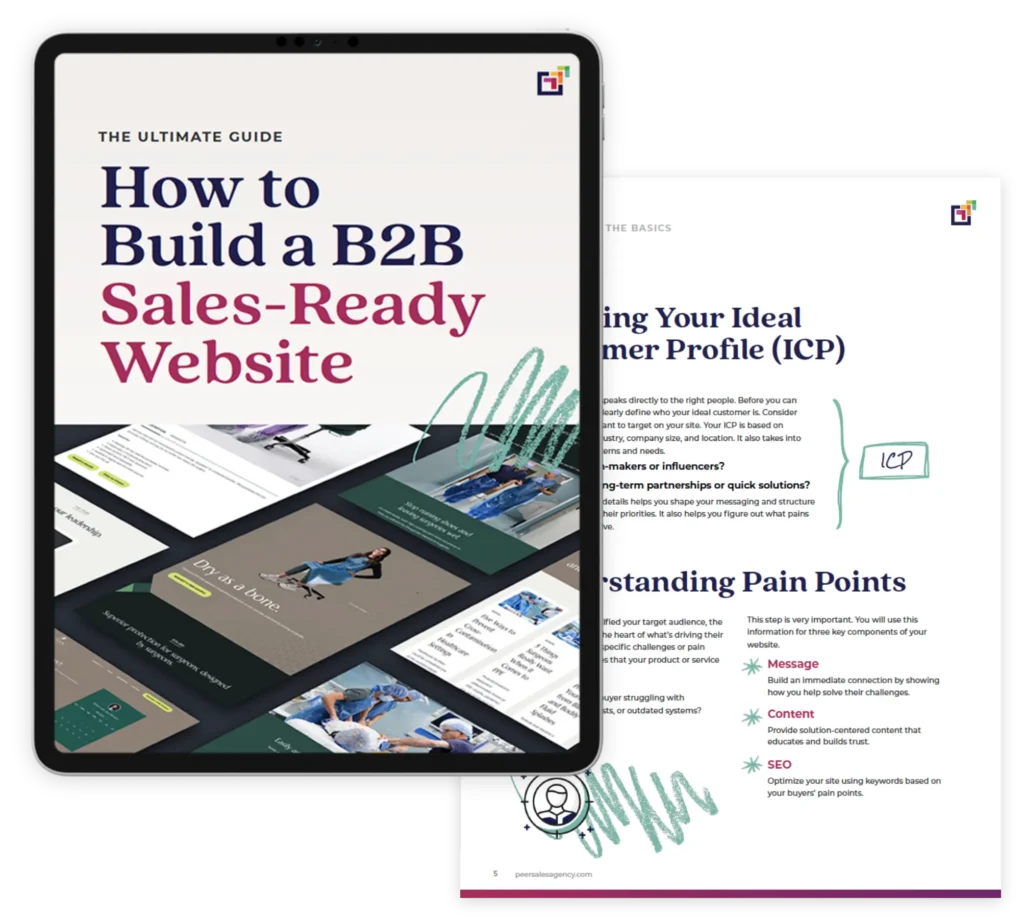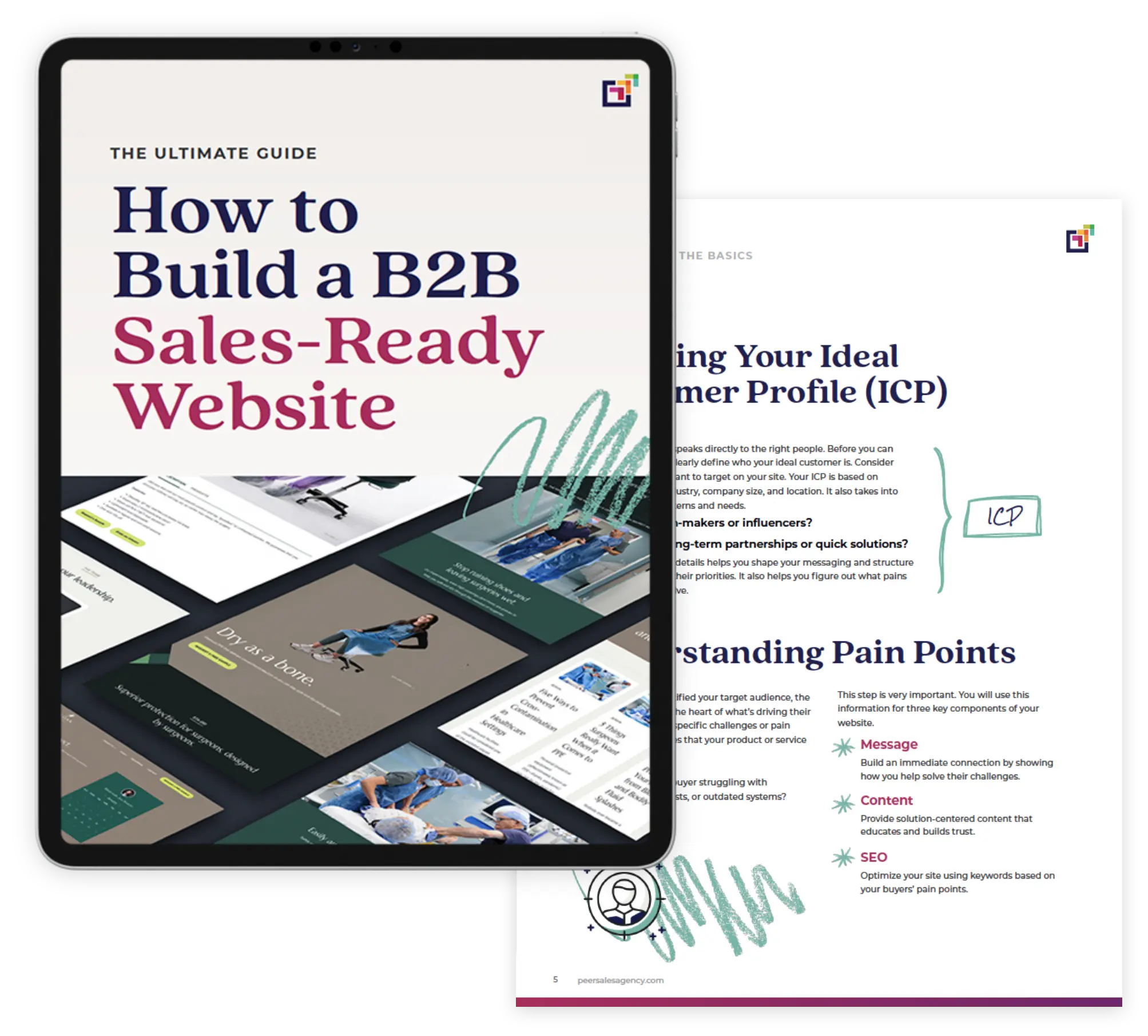Every marketer wants to transform a “good” B2B marketing campaign into something truly great. But how do you go from results that are just okay to something outstanding? B2B companies are more careful than ever when choosing a partnership, and individual consumers are increasingly skeptical. So how do you cut through the noise to make a case for your solution?
It starts with a deeper understanding of campaign fundamentals and ends with data-driven decision-making. Key elements, like limiting your goals and understanding your buyer’s journey, are must-haves. Plus, choosing an integrated approach can make a massive difference in your overall results.
Neglecting a campaign after launch can be a fatal mistake, too. Successful marketing requires constant attention. Monitoring progress and making timely adjustments can keep your efforts in line with your business goals. Optimizing individual tactics is how your team makes sure you’re getting the best possible results from your marketing dollars.
Data-driven decisions have become the backbone of marketing success. Ultimately, these practices lead to smarter spending. This article explores a few strategies to elevate your B2B marketing campaign from good to great.
A Good B2B Marketing Campaign’s Foundation
A successful B2B marketing campaign requires solid groundwork. This foundation rests on three key components: understanding your potential customers and the buyer’s journey, choosing your target ideal customer profile and persona, and selecting the right marketing mix for an integrated marketing campaign strategy.
Launching an integrated marketing campaign, instead of a single-channel campaign, can help speed up your sales cycle.
Integrated marketing campaigns see a 287% higher purchase rate compared to single-channel campaigns!
Each component plays a significant role in shaping your campaign strategy and ensuring you’re reaching the right people. Knowing these elements helps create a smooth path from awareness to purchase. By aligning your strategies with these components, your chances of running an effective campaign increase significantly. Let’s delve into each component:
Campaign Development Step One: Know Your Target Market & Persona
Identifying your ideal customer profile and buyer persona is vital. Before launching a B2B marketing campaign, you need to know who you’re targeting.
These profiles provide detailed insights into your audience. They guide your messaging and strategy. Without them, your campaign could miss the mark. An ideal customer profile outlines the companies you’re targeting. Buyer personas dive deeper into the individual consumers within those companies. These elements ensure your campaign resonates with the right audience.
Campaign Development Step Two: Know Your Goal
Before starting your B2B integrated marketing campaign, you must set clear goals.
Choose one, maybe two, main objectives to keep your campaign on track. Too many goals can lead to confusion and dilute your efforts. A focused approach allows for more precise measurement and better resource allocation. Whether it’s brand awareness or lead generation, a clear goal helps guide your strategies. Goals act as the finish line, steering every campaign decision you make.
If you’re choosing two goals for a campaign, they should be in the same or adjacent funnel stages. For example, you may want to increase brand awareness and top-of-funnel leads like blog subscribers. Or, you may want to get more traffic to a specific webpage and increase middle-of-funnel leads like demo requests.
Goals should be complementary and research-based. How do you know which goals are complementary in a B2B marketing strategy? It starts with knowing the buyer’s journey for your target audience.
Campaign Development Step Three: Know Your Buyer’s Journey
Understanding the buyer’s journey, also called your customer journey, is crucial for campaign success. This journey outlines the steps a potential customer takes from awareness to decision.
Before developing your B2B marketing campaign, you need this map. It helps you tailor your messaging to match the buyer’s thoughts, feelings, and needs at each stage. You’ll also be able to see what kind of actions they take at each stage. Do they:
- Download comparison guides?
- Attend webinars?
- Listen to podcasts?
- Read blogs?
- Want a free trial or sample?
- Book demos and talk to experts?
Depending on your research, you’ll need to create various sales enablement and marketing assets to help your buyers make a decision. You’ll also need to offer conversion opportunities that align with what your buyers need and want at each stage.
Awareness, consideration, and decision are the typical stages in this journey, but each of these stages will break down into mini-goals. You’ll need to outline your buyer’s journey before you design a campaign.
With this knowledge, you can create targeted content that addresses specific needs. Knowing the journey ensures your campaign is timely and relevant.
Campaign Development Step Four: Design an Integrated Marketing Campaign
An integrated marketing campaign combines various channels to create a unified message.
Choosing the right marketing mix is crucial. Base your selection on your ideal customer profile and persona. Each channel should complement the others, working together seamlessly. This synergy enhances your message’s reach and impact.
Consider a mix of digital and traditional marketing tactics. Digital channels such as social media, paid digital ads, email marketing, and search engine optimization (SEO) with content marketing are powerful tools for reaching a wide audience.
Integrated marketing campaigns have a 600% higher response rate versus traditional marketing alone!
Your integrated marketing campaign can make use of offline and traditional channels like direct mail and trade shows, too, which can create a more personal and tactile experience.
Choose a balanced marketing mix from options that align with the way your persona chooses solutions:
- Social Media Marketing: Platforms like LinkedIn are invaluable for B2B networking and engagement. Use them to share thought leadership content, run website traffic-generating ads, and connect with potential clients through video, boosted company page posts, and downloadable content.
- Email Campaigns: Personalized email campaigns that offer something of significant value can nurture leads into a purchase more quickly than many other channels. Segment your lists to deliver tailored content to your different buyers.
- Content Marketing: Develop high-quality, valuable content such as blogs, whitepapers, or eBooks to provide value and help solve problems for your potential clients.
- Trade Shows and Conferences: Attending these events can open direct communication channels with potential clients. They offer opportunities to demonstrate products and gather feedback. Be sure you’re ready to impress with signage, booth setups, and product/service slicks for people to take away.
- Direct Mail: Sending thoughtful mail pieces, especially those with a compelling offer of some kind, can cut through digital noise and leave a lasting impression.
- Networking Events: Participate in industry-specific events, give talks, and expand your network.
A combination of these marketing channels will work seamlessly in an integrated marketing campaign to surround your target audience with one unified message. B2B buyers have a longer buying journey, and you’ll need to stay top-of-mind for several months. This is especially important if your business is running an ABM campaign.
Running each marketing channel in a silo can lead to inconsistent messaging and a disjointed buyer’s experience. An integrated approach ensures you deliver a consistent and strong message across all touchpoints. This holistic strategy helps achieve your campaign goals more effectively.
Don’t Set It and Forget It – Monitor, Modify, Optimize
Running a successful B2B marketing campaign isn’t about setting it up and walking away. It’s about careful planning and continuous engagement from your marketing team.
A good B2B marketing campaign requires ongoing assessment and adjustments to achieve the best results. Monitoring, modifying, and optimizing are key steps in maintaining your campaign’s relevance and effectiveness. By being attentive to these processes, you can ensure that your marketing efforts align with your goals and reach your target audience effectively. It’s essential to stay proactive, as this vigilance can set your campaign apart from the competition.
Monitoring a B2B Marketing Campaign
Monitoring your B2B marketing campaign is crucial for maintaining its health and impact.
A member of your marketing team will need to keep an eye on various elements and indicators that show how well the campaign is doing. For instance, look out for changes in engagement rates, conversion rates, and other pertinent data (your leading indicators) that ladders back up to your main campaign goal.
You might find that your message isn’t resonating as expected or that your channels aren’t as effective as you thought they might be. Metrics like customer acquisition cost and return on investment give insight into your efforts’ success. Watching these can help you spot pitfalls early, such as low engagement or high bounce rates, allowing you to make informed decisions.
Keep an eye on all your marketing activities associated with the campaign, both organic and paid, to make sure you’re pivoting away from wasteful strategies and doubling down on the tactics that work best.
Modifying a B2B Marketing Campaign
When it comes to modifying a B2B marketing campaign, you want to approach it systematically.
Change only one factor at a time to ensure accurate results in your A/B testing. This way, you can pinpoint what specific change leads to improvement or decline in performance.
For example, you can consider altering elements like email subjects to increase open rates. If engagement is low, choose alternate headlines, calls to action, or ad placements.
Each option can affect your campaign’s outcome differently. Other modifiable factors might include targeting different audience segments or adjusting your marketing budget allocation.
By being methodical, you can fine-tune your approach and discover the most effective strategies for your audience.
Optimizing a B2B Marketing Campaign
Optimizing your B2B marketing campaign takes it a step further by not only fixing issues but also enhancing overall performance.
Focus on enhancing strengths while addressing weaknesses in your campaign. Look at which messages and channels produce the best results, then emphasize those by duplicating the creative for other channels or adding budget to your highest converting channels.
Consider using marketing automation tools to streamline and improve prospect interactions and the customer experience. By analyzing customer feedback and data trends, you can identify potential opportunities. Use insights to tweak content for better engagement or shift funding to higher-performing channels. Continuous optimization helps maintain momentum and ensures your marketing efforts yield the best results.
Reporting & Data-Driven Decision Making
Reporting on your B2B marketing campaign is crucial. It shows whether you hit your goals. To do this well, tie your reports back to your original campaign goals. Use metrics like lead generation, conversion rates, and customer engagement. This helps you see what works and what doesn’t.
Align Reporting to Campaign Goals:
- Identify specific metrics that reflect each goal.
- Regularly compare results to these metrics.
- Adjust your strategy based on these insights.
Creating a simple table can help:
| Goal | Metric | Outcome | Benchmark |
| Increase Leads | Number of Leads | 150% of Target | Benchmark data |
| Boost Engagement | Engagement Rate | 25% Increase | Benchmark data |
Data-driven decisions are the backbone of future success. Analyze what the data tells you. Was your campaign effective? Did it reach the right audience? Make changes based on this information. Learning from these insights keeps you competitive.
Data-driven decisions are the backbone of future success. Analyze what the data tells you. Was your campaign effective? Did it reach the right audience? Make changes based on this information. Learning from these insights keeps you competitive.
Measuring and Analyzing Campaign Performance
To gauge the success of your B2B marketing campaign, it’s essential to establish clear metrics and KPIs (key performance indicators) from the onset. This analytic rigor allows you to make informed decisions about future campaigns and optimizations.
Here are some important metrics to consider:
- Lead Generation: Track the number of leads generated compared to your initial targets. Monitoring form submissions, downloads of gated content, and inquiries can provide a clear picture.
- Engagement Rates: Measure interactions on your social media posts, emails, and content pieces. High engagement suggests that your content resonates well with your audience.
- Conversion Rates: Assess how many leads turned into actual paying clients. This will help you evaluate the quality of your leads and the effectiveness of your sales funnel.
- Traffic Sources: Analyze which channels drive the most traffic to your site. Understanding this can help allocate your budget more effectively for future campaigns.
- Return on Investment (ROI): Calculate the ROI for your campaign. Use this simple calculator, if needed.
Effective reporting helps you understand your achievements. Aligning reports with goals gives clarity to your team. Data-driven decisions make your future campaigns stronger!
Get More From Your Marketing Dollars
To get more from your marketing dollars, design an integrated campaign that addresses one or two main goals and helps your target audience solve a pain or problem.
Focus your b2b marketing strategy by adding cost-effective digital channels like social media and email to other, more personal outreach like trade shows.
Here’s a quick checklist to maximize marketing ROI:
- Set clear objectives
- Identify your target audience
- Use cost-effective digital channels
- Run an integrated marketing campaign
- Track key performance indicators
- Engage with quality content
- Analyze and adjust your strategy
- Report on the results and use data to drive your decisions
If you’re already running a paid ad campaign and want to make sure your ducks are in a row, reach out to our experts for a 39-point audit! We’ll give you our insights and help you improve the effectiveness of your paid ads. Plus, your audit could be free!






